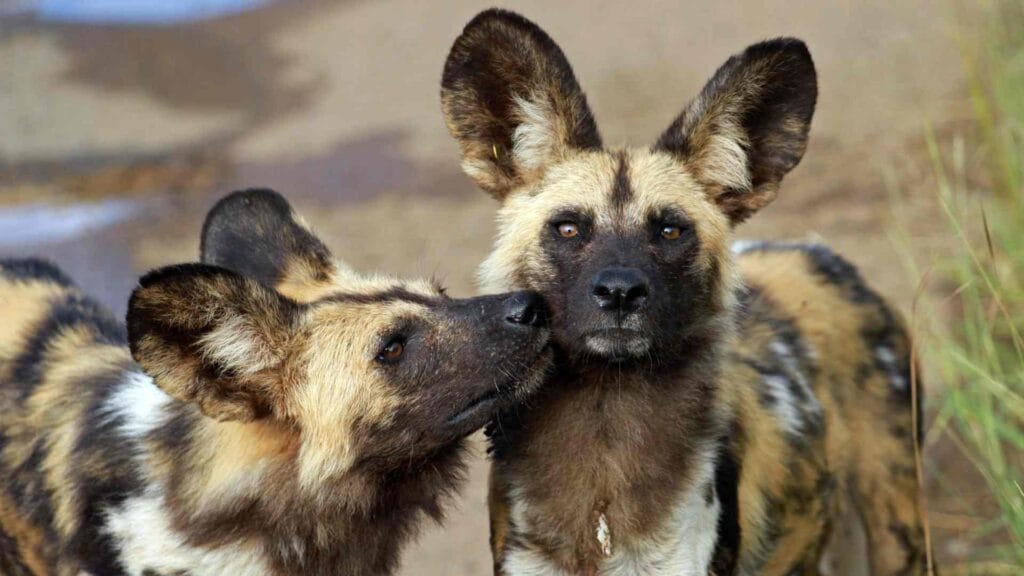African wild dogs (Lycaon pictus), also known as painted wolves or Cape hunting dogs, are among Africa’s most efficient predators. Their striking coats and complex social dynamics captivate wildlife enthusiasts, but their dietary habits are equally fascinating. Let’s explore what fuels these endangered carnivores and how their hunting strategies sustain their packs.
Hypercarnivores Built for the Hunt
African wild dogs are hypercarnivores, meaning over 70% of their diet consists of meat. Unlike scavengers like hyenas, they prefer fresh kills. Their teeth are uniquely adapted for slicing flesh and hunt more efficiently.
What Is Their Food?
African wild dogs are carnivores, which means they eat meat. Their favourite meals usually come from hoofed animals. Hoofed animals are those with hard feet, like antelopes. In many parts of Africa, the wild dogs often hunt animals like impala and gazelles. Sometimes, African wild dogs also catch wildebeest or small antelopes called dik-dik.
Seasonal and Regional Variations
Diet shifts slightly based on location and prey availability:
- Southern Africa: Impalas dominate year-round due to stable populations.
- East Africa: Wildebeest calves become targets during migrations.
- Wet vs. Dry Seasons: In rainy months, prey disperses, forcing packs to hunt smaller animals like rodents.
How Do They Hunt?
Hunting for African wild dogs is a team effort. No one wild dog can catch a fast animal all by itself, so the pack works as a group. Each dog takes part to help drive and corner the prey. In a similar way, African wild dogs run very fast and chase the animal until it cannot run away anymore.
When the wild dogs catch their prey, they share the meat with every member of the pack. This teamwork helps every dog get enough food to stay strong and healthy.
Hunting Strategies: Teamwork Makes the Dream Work
African wild dogs boast an 80% hunting success rate—far higher than lions (30%) or hyenas (25%). Their tactics vary by prey:
- Endurance Chases: They pursue prey at speeds up to 72 km/h (45 mph) and a single hunt can span 10–60 minutes.
- Strategic Coordination: Packs split roles during chases. While some dogs lead the pursuit, others cut off escape routes or take over if the lead hunter tires.
Threats to Their Food Supply
Habitat loss and human conflict disrupt their hunting grounds:
- Livestock Conflicts: As wild prey declines, African wild dogs occasionally target goats or cattle, leading to retaliatory killings by farmers.
- Disease Transmission: Domestic dogs spread rabies and distemper, which can decimate entire packs.
- Prey Depletion: Bushmeat poaching and habitat fragmentation reduce ungulate populations, forcing wild dogs to travel farther for food.
Conservation
Efforts to safeguard African wild dogs focus on preserving their ecological role:
- Wildlife Corridors: Connecting fragmented habitats allows packs to follow migratory prey.
- Community Education: Teaching farmers predator-proof livestock techniques reduces conflicts.
- Disease Monitoring: Vaccination programs for domestic dogs near protected areas curb outbreaks.
Conclusion
The African wild dog’s diet reflects its intelligence, adaptability, and social complexity. By understanding what they eat and how they hunt, we gain insight into why these animals are vital to maintaining healthy ecosystems. Protecting them ensures the survival of not just a species, but a linchpin of Africa’s biodiversity.
References:

